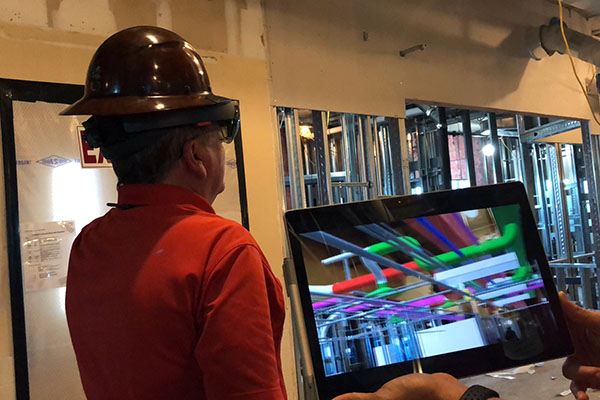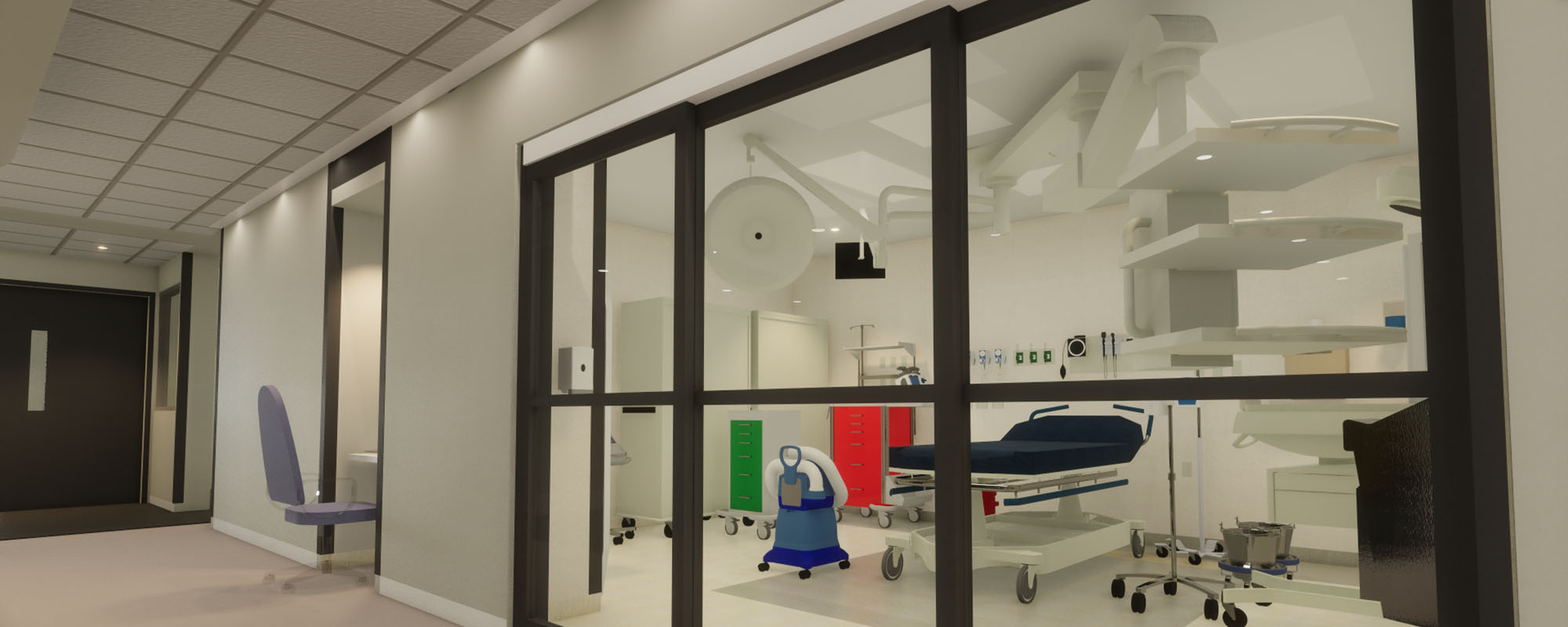 At the end of 2019, virtual reality (VR) tech giant, Oculus, released its latest feature: hand tracking.
At the end of 2019, virtual reality (VR) tech giant, Oculus, released its latest feature: hand tracking.
In small Beta batches across test applications, users began experiencing this new wave of VR immersion as their hands and fingers replaced traditional remotes. The initial reviews echoed similar sentiment – a feature with fantastic promise as users raved about the fact that they could actually see their “hands” in the virtual space. But like many newly-released elements, there are still some latency issues and bugs to be resolved.
While VR is often associated with gaming, and more recently with training simulators in the corporate world, it has also become a critical component to the planning, design and construction community.
With the rise of building information modeling (BIM)/virtual design and construction (VDC) in the last two decades, it’s now possible to “build” a facility in a virtual environment before the sitework even begins. As VR has become more commonplace, construction and design teams have been able to integrate the tech with modeling, allowing users to view their buildings from the inside – essentially, try it before you buy it. This gives building owners and users the freedom to make changes to design before it becomes costly, or even impossible, due to structural circumstances.
As the technology continues to become more refined, and augmented reality (AR) rises in popularity as a field tool for the visualization of integrated systems, what do these new immersive features mean for construction and design? Manager of Scheduling and Innovative Support, Steve Moore, takes both the long and short views of five key indicators we’re seeing today.
- Improved remote meeting experiences. Although it’s been nearly six years since Facebook acquired Oculus in 2014, CEO Mark Zuckerberg shared musings over “The Next Computing Platform” in a blog post earlier this month. He reflects on our constantly evolving relationship with technology through devices and how he believes that augmented reality will be to the 2020s what the mobile phone was to the 2010s. He envisions AR delivering a sense of presence so realistic that distance will no longer be a noticeable challenge to communication, creating the potential to eliminate costly travel. Zuckerberg believes this could be an attainable goal in the next 10 years. As facility owners work to bring together the most adept teams to build, they often struggle with the cost of full time co-location and regular in-person meetings for geographically dispersed companies. Alternately, owners also find the remote meeting experience is not sophisticated enough to support the project’s needs. This advance in tech could potentially level the playing field in project team talent acquisition, ensuring the right people are serving each project despite geographic boundaries.
- More seamless experiences within models. As tech advances at a more granular level, we’re already seeing – and will continue to see – a more seamless user experience within models. For example, in Windows’ Mixed Reality, users can move their entire bodies within the virtual space as the headset utilizes cameras to map the room. The user is no longer limited to motion through a controller. Companies are also elevating UX through advanced multi-user tools. A previous limitation to viewing models with project teams was the requirement of physical togetherness. A BIM/VDC professional would come to a predetermined location, set up the viewing platform with a headset, and each user would review the model: one by one. After everyone reviewed, viewers would gather with their notes to make changes or ask questions – sometimes struggling to communicate problems or issues. Fuzor and Synchro are a few examples of companies that have recently released tools that allow multiple users to enter the same model simultaneously anywhere in the country. While there are still performance challenges, this is the onset of advancing communication, removing a facet of waste from the process, and allowing collaboration in real time.
- Simplified quantity tracking and quality control management. Many software companies are working to integrate quantity tracking and quality management features with VR and AR applications. With advances in artificial intelligence, we’re beginning to see a divide form in this space creating a human-involved side and a non-human-involved side. For the human-involved approach, AR helps to visually “layer” an element of a building’s future design on top of reality, which then allows the human to assess any necessary adjustments in relation to quality control or quantity management. An example of the non-human-involved system functionality may include volumetric measurements and object recognition, providing results that can be aggregated and reported. Some of these results may include quantity tracking of specific objects and identifying if there are misalignments in installations, among others. This is still in its infancy, but the functionality could remove aspects of human error and a significant amount of time from the process once perfected.
- More VR/AR integrations into existing applications. As more digital platforms turn to VR and AR as a standard user experience, developers have created toolkits surrounding the technology. These toolkits supply the basis of the coding, ultimately allowing for simpler, faster integration into existing applications. Now, VR applications are much more approachable and don’t require expert-level development, expanding their accessibility.
- General, greater ease of use will lead to more adoption. In the early days of VR and AR, it required highly-specialized individuals at every stage to facilitate the experience. It was a novelty, and impractical for every day use. Now, with the rise of toolkits, a broader use of applications and generally more user-friendly features, the public is finding VR and AR a commonplace experience. For some technologies, this can be a death sentence – common leading to irrelevance. But for VR and AR, common will translate to greater ease of use and will simply lead to more adoption. This will also likely be true in the construction and design space. As technology becomes more refined, facility owners will come to expect its use in all construction projects and adoption will, in turn, increase alongside demand. “The closer we come to slapping on a pair of glasses with no setup, the closer we come to widespread adoption of this tech,” Moore said.
While there is no certainty in predicting the future, trends do point positively to sustainable growth in the utilization of various tech tools to offset the workforce challenges the construction industry continues to face. As the needs for the built environment continue to increase at a pace incomparable with the rate of hirable craft labor, the industry continues to turn to technology and innovation to make work faster, safer and more efficient to protect the resources available.

